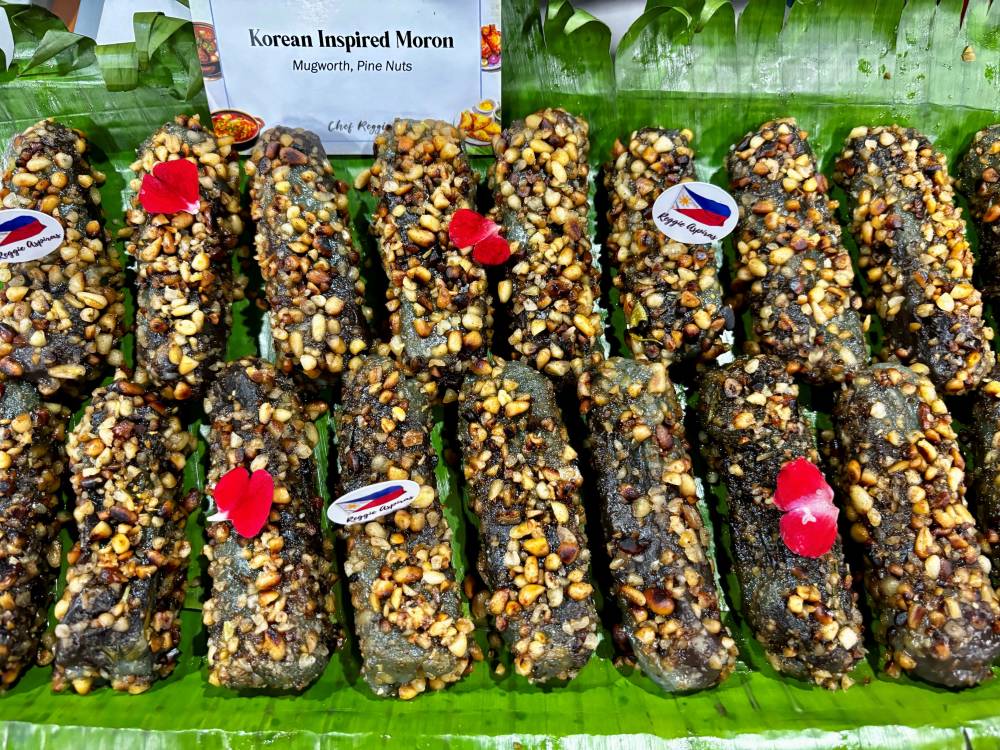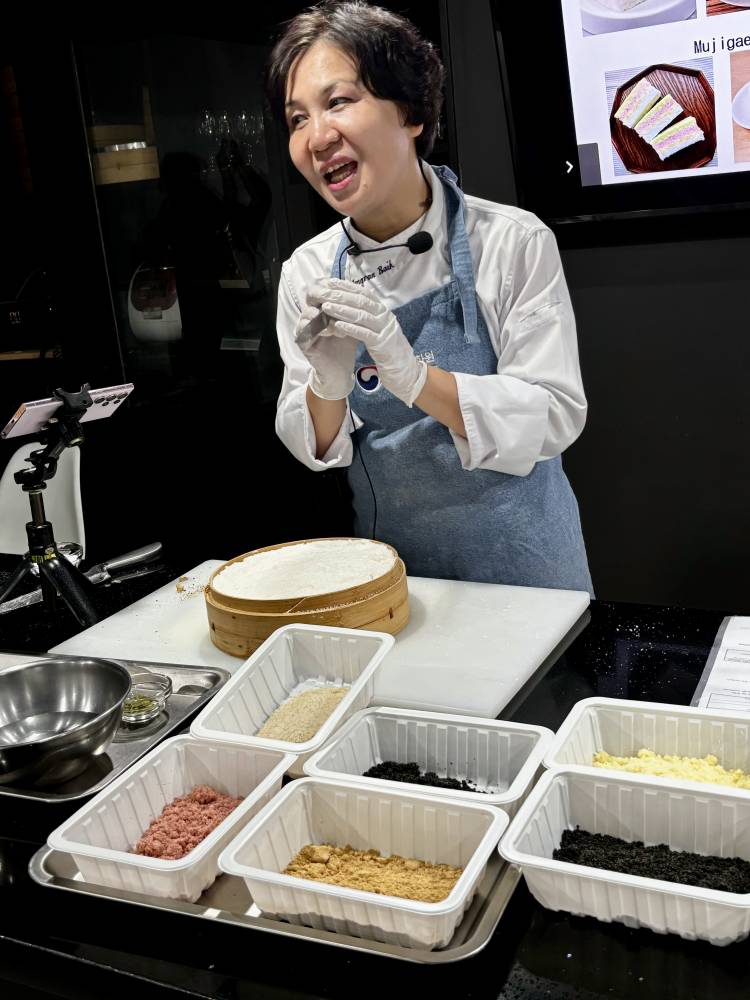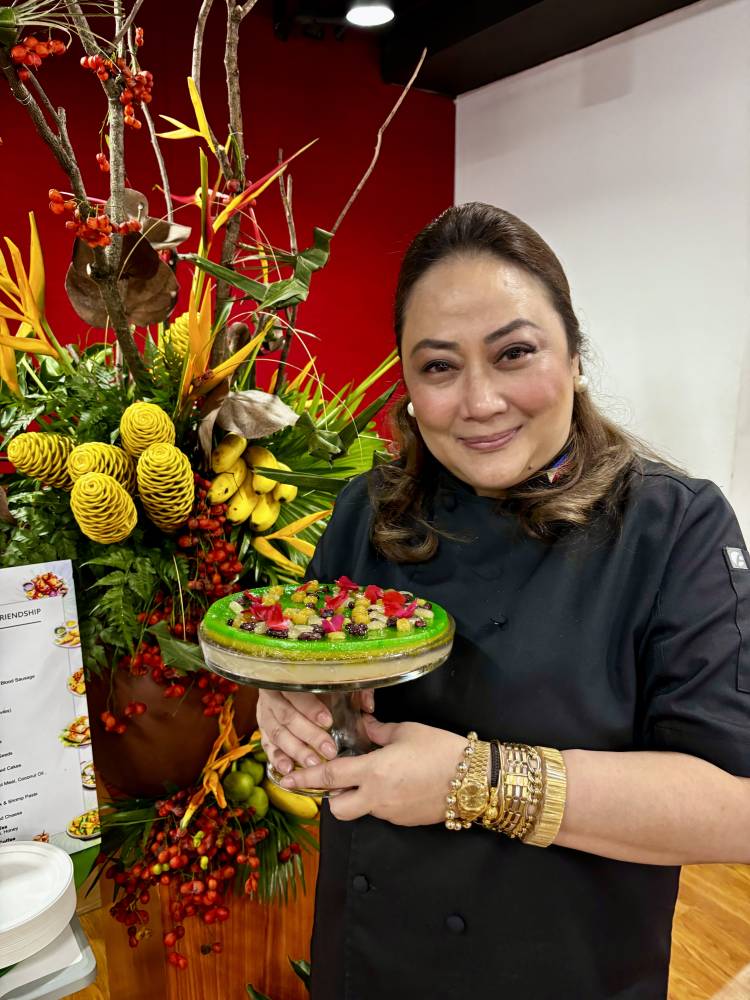‘K-Drama Cookbook’: A culinary exchange

In the postpandemic world, chef and Lifestyle columnist Reggie Aspiras has evolved from an educator into a culinary ambassador, using food as a bridge to connect with diverse cultures. Beyond her former classroom kitchen, she has embarked on a culinary journey, introducing food enthusiasts to the rich tapestry of regional and international cuisines.
A prolific cookbook author, Aspiras has recently collaborated with international chefs to localize their recipes for Filipino palates. Last year, she partnered with Japan Embassy chef Daisuke Suzuki on “Gochiso Sarap.” This year, to commemorate the 75th anniversary of Philippine-Korean diplomatic relations, Aspiras joined forces with chef Lily Min of the Korean Cultural Center (KCC) to create a cookbook and merienda showcasing their culinary heritage.
Inspired by the surge in Korean culture’s popularity, following the success of K-drama and K-pop, “K-Drama Cookbook” was conceived during the pandemic. Featuring 36 beloved Korean recipes from popular TV series, the book maintains the authenticity of Min’s traditional recipes while incorporating Aspiras’ expert tips for Filipino adaptation. For instance, she suggests substituting glass noodles in japchae with pancit canton or Italian pasta with thickened sauce and expanding the mushroom options beyond shiitake to include shimeji and other varieties.

Tweaking Filipino food
Aspiras believes in balancing flavors. She recommends pairing the spicy samgyetang (ginseng chicken stew) with a refreshing side salad of pako, watercress, parsley, cilantro, and arugula.
The Phil-Kor Culinary Heritage Exchange highlighted the rice cake as a shared culinary foundation while showcasing the unique characteristics of each country’s cuisine. During the demonstration, Min showcased traditional Korean rice ball cakes infused with ube and pandan, while Aspiras tweaked the palitaw by substituting shredded coconut and sesame seeds with Korean nori strips and pine nuts.
The merienda buffet was a celebration of cultural exchange. Aspiras created “K” Pastil, a fusion of kimchi rice with shredded adobo and achara. A Korean-inspired moron, a Visayan glutinous rice roll, was infused with mugwort powder and rolled in pine nuts. Suman champorado was given a Korean twist with anchovies instead of tuyo, and suman magkayakap had tangy Korean citron. The tupig Sarrat, a char-grilled glutinous rice and coconut meat roll, was elevated with black sesame seeds. Dinuguan was cooked with Korean blood sausages and paired with a modern blue pea-infused puto.
In a surprising discovery, Aspiras unearthed an unknown Pasig laksa, a coconut milk-based soup comprised of achuete, bagoong, and shrimp heads, with her curry powder twist.

Royal desserts
The artful presentation of the Korean desserts reflected the refined elegance of royal cuisine. Crafted with meticulous attention, these delicacies showcased a harmonious blend of textures and flavors. Finely milled rice flour, pumpkin seeds, and pine nuts contributed to their intricate composition. While seemingly simple, these desserts demanded precision and skill.
Gracefully displayed on porcelain cake plates, the desserts, in variations of rice cakes, exuded an air of sophistication. The yakwa, a traditional crispy, layered pastry, was adorned with flecks of gold, elevating its visual appeal. The gaesung juak, a fried glutinous rice donut, was given a luxurious touch with a sweet glaze. The songpyeon, fermented rice balls, were adorned with delicate floral designs. These exquisite treats were complemented by omija, a complex Korean berry tea that offered a symphony of sweet, sour, bitter, salty, and pungent flavors.
A Filipino counterpart to the biko, the yaksik was reimagined using Filipino glutinous rice and glutinous rice powder. Min added another local twist by substituting traditional Korean brown sugar with muscovado, which she says is more nutritious.

Min has embraced Filipino ingredients, incorporating muscovado and coconut sugar into her cooking. She has also become a fan of Knorr seasoning, sharing her discovery with friends back home who have combined muscovado and soy sauce to create a unique frying sauce. To make authentic Korean dishes such as kimbap (seaweed rice roll) and doenjang (soybean paste soup) more accessible, she has successfully substituted spinach with kangkong or water spinach.
Initiatives such as cooking demonstrations and cookbook collaborations are instrumental in fostering cultural exchange and understanding. As Aspiras expressed, quoting Lee Eun-hua, the wife of Korea Ambassador Lee Sang-Hwa, “Just like these sticky rice cakes, the relationship between Korea and the Philippines is binding.”

















